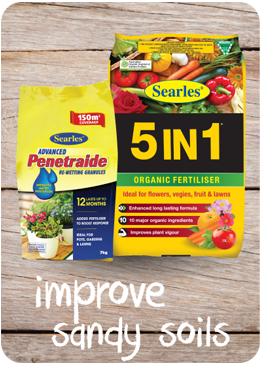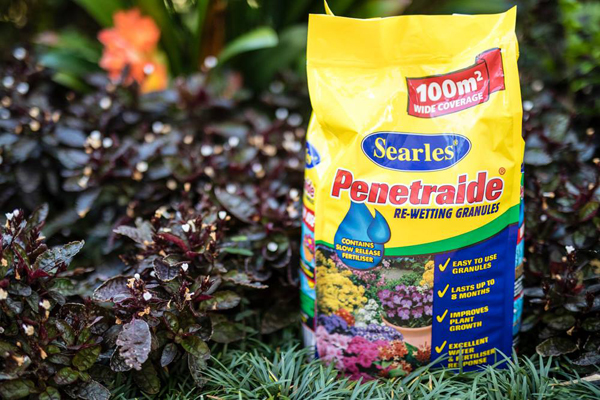Improve sandy soils for planting
 |
|
Many areas of Australia have poor, sandy soils, especially near the coast and often in new housing developments where sand has been trucked in for house construction.
Sandy soils lack nutrients, have poor water-holding capacity, are wastefully water-repellent and heat up very quickly in the hot sun, thus damaging tender plant roots. This invariably results in poor plant growth and health. Their quick draining habit makes it hard for the soil to hold onto fertilisers applied. However, do not despair if you are trying to garden with sandy soil for there are some simple and effective ways to convert it into rich loam and maintain good health of soil. All you have to do is follow these simple steps.
First, how to test for sandy soilsSandy soils are mostly made from gritty sandy particles. To test the soil, grab a handful of soil and if the soil doesn’t hold together and breaks up when squeezed together then you have sandy soil.
Plants for sandy soilSandy soils don’t hold water and is low in nutrients. Some plants have adaptable to these conditions over time, especially coastal and inland natives, such as coastal banksias, tea trees, coastal rosemary (Westringia fruticosa) kangaroo paws, hardenbergias, leptospermums, Atriplex ‘Silver Holly’, geraldton wax (chamelaucium uncinatum), eremophila and hardy, low water dependent succulents and lavender varieties.
Add organic compost and fertiliser to improve sandy soilsThe first step is to add organic matter to the soil. Add at least a barrowload per square metre of good quality organic compost and fertiliser into your soil and dig it over to a depth of 10 - 15 cm. Some good products to use are 5 IN 1, Premium Organic Compost, pelletised poultry manure, other animal manures, compost activator and blood and bone. The more you add, the better. The addition of organic matter into the soil will greatly improve structure, allowing water to penetrate more easily. It immediately provides plant nutrients which were previously lacking, promoting strong and healthy growth. And very importantly, it increases the soil's ability to absorb and hold water, reducing the amount of watering necessary to keep plants growing.
A rich, healthy soil encourages healthy micro-organisms which work for the benefit of plants. In fact it becomes like a storehouse, with the ability to hold and store precious plant nutrients and make them available to plants when needed. As the organic matter breaks down even more, it converts into humus which is the key to truly healthy soils.
The hotter the climate, the more important it is to keep replenishing the soil. Very sandy soils such as those found near beachfronts will need to be constantly improved with compost, manure and mulch until the garden soil is dark in colour and crumbly in texture (friable). Earthworms are another sure sign that your soil is healthy.
The organic matter in the soil also acts as a temperature buffer and this is particularly important in hot climates where long hours of hot sunlight can cause the soil to overheat, damaging plant roots.
Water Crystals to improve sandy soilsWhen digging in the compost and organic fertilisers also sprinkle on some Searles Water Crystals and dig these into the top 10-15cm of soil. There have tremendous benefits in sandy soils. Each crystal swells up and absorbs up to 400 times its own weight with water. Collectively they act as small reservoirs of water throughout the soil, reducing the amount of watering needed on the garden and lasting for years in the soil. They are only effective if dug well in so don't leave the crystals lying on the surface.
Re-Wetting Granules to improve sandy soilsWhen you have finished adding compost, fertiliser and water crystals to the soil, sprinkle with re-wetting granules such as Searles Advanced Penetraide. Then give the garden a good watering to moisten the soil deep down. The re-wetting granules allow the water to soak into the soil and will reduce wasteful water runoff. They make very efficient use of applied water, thus reducing the amount needed for plant growth and saving both time and money.
MulchingMulch planted areas generously with organic products such as sugar cane or lucerne mulch. Harder mulches such as bark and nutshells may not break down fast enough to help build up your soil structure in a short time. Mulching will reduce water loss, reduce heat stress to plant roots, and it will also break down and enrich the soil. As each application of mulch breaks down, add a whole lot more. In this way you will constantly be improving your soil without much effort. |
 |





